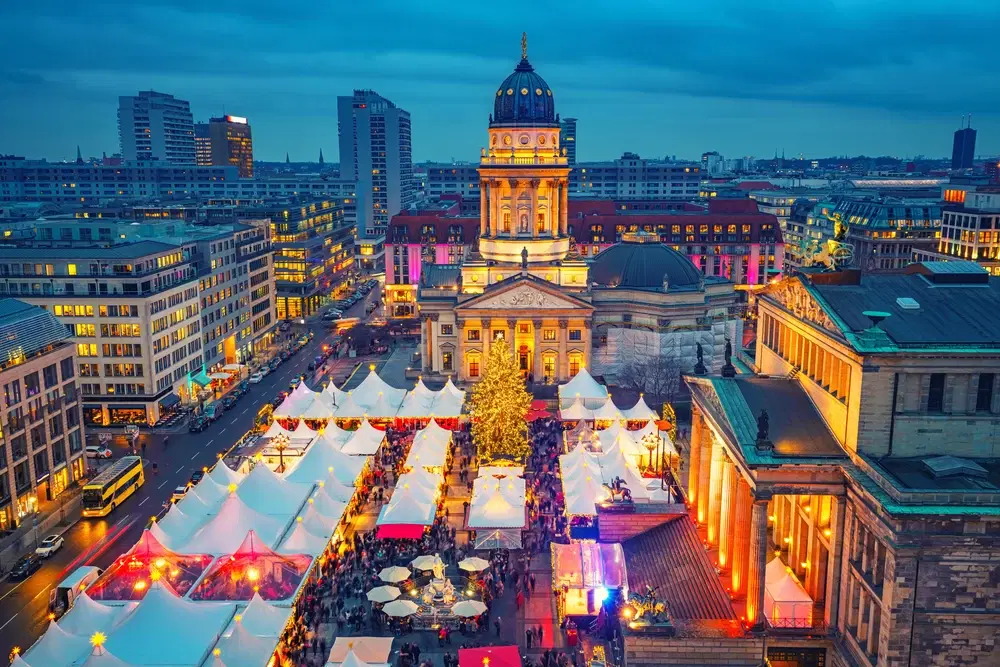
Flights
•04 min read

Imagine sitting in a cozy German beer garden, savoring a plate of bratwurst and sauerkraut while enjoying a cold pint of authentic German beer. German food culture is a fascinating journey into rich traditions and regional flavors that have delighted food enthusiasts for generations. At Tata Neu, we believe that every journey, much like every meal, should be filled with luxury, comfort, and joy—ensuring your travel experiences are as memorable as the flavors you discover. In this blog, we explore traditional German cuisine, its historical roots, and unique culinary customs. Whether you are curious about the origins of popular German dishes or eager to learn more about authentic recipes and dining etiquette, this guide has the answers you seek.
German cuisine has evolved over centuries. Influenced by agriculture, trade, and even neighboring nations, traditional German cuisine is a blend of hearty ingredients and robust flavors. The simplicity of potatoes, cabbage, and pork coupled with time-honored cooking techniques creates a culinary heritage that is both rich and welcoming.
Across Germany, regional specialties tell a story of local pride and diverse flavor profiles. Whether it’s the soft, doughy pretzels and savory sausages found in Bavaria or Berlin’s famous currywurst bursting with spices, each region boasts its own identity. The availability of fresh, local ingredients means that every meal is a reflection of the geography and traditions of its area.
At its heart, traditional German cuisine is hearty, flavorful, and often centered around meat. Common ingredients such as rye bread, potatoes, and cabbage combine to create dishes that are both nutritious and satisfying. These meals not only nourish the body but also decorate the dining table with vibrant regional colors and stories handed down through generations.
From the crisp schnitzel and succulent sauerbraten to the ever-popular bratwurst and soft, tender spätzle, each dish offers its own unique charm. And who could forget the sweet delights like Schwarzwälder Kirschtorte and Apfelstrudel, desserts that capture the warmth of German hospitality and the festive spirit of its culinary traditions.
German daily life revolves around well-structured meal times. Breakfast is often a simple affair, while lunch, the largest meal of the day, brings family and friends together. The tradition of "Kaffee und Kuchen" in the afternoon provides a delightful pause with a cup of coffee and a slice of cake, making each day a little sweeter.

Dining in Germany is as much about the experience as it is about the food. Table manners are observed with quiet respect, and communal dining brings a sense of unity. Whether you are enjoying a festive holiday meal or a casual dinner, you will find that traditions like proper tipping and respectful conversation enrich the dining experience.
Beer holds a special place in the heart of German food culture. The Reinheitsgebot, a law that dates back to 1516, ensures that beer is brewed with only water, hops, and barley, setting a standard of purity and excellence. This tradition has given birth to a wide variety of beers that are enjoyed in festive gatherings and quiet evenings alike.
Festivities in Germany are marked by unique holiday dishes. From gingerbread and Christmas cookies to the robust flavor of roast pork knuckle, these dishes bring family and friends together. Each culinary delight reflects the warmth and exuberance of German celebrations, creating memories that last a lifetime.
Insight Corner: "Did You Know?"
According to estimates by the German Brewers Association, Germany is home to over 1,300 breweries and produces more than 5,000 different types of beer. This incredible diversity makes German beer culture one of the richest in the world, preserving the legacy of the Reinheitsgebot which has guided brewing traditions for centuries.
If you are keen to explore German culinary traditions in your own kitchen, there are many simple recipes to try. Classic dishes such as schnitzel, potato salad, and spätzle can be recreated using traditional ingredients to achieve authentic flavors. Preparing these well-loved recipes not only fills your home with delightful aromas but also invites you to be part of a centuries-old culinary legacy.
In addition to well-known dishes, regional specialties like Bavarian pretzels or Swabian maultaschen offer a unique taste of local heritage. Pairing these specialties with a well-chosen German beer can elevate your dining experience, allowing you to enjoy a meal that is both satisfying and culturally enriching.
Experience these timeless German culinary traditions firsthand by booking your flights with Tata Neu. Enjoy benefits such as exclusive deals, integrated NeuCoin rewards (1 NeuCoin = 1₹ saving), and seamless travel with our trusted partners Air India and Air India Express.

Germany is renowned for its hearty dishes such as bratwurst, schnitzel, sauerkraut, and pretzels, along with its prestigious beer culture.
Although there is no official national dish, many consider sauerbraten and bratwurst as examples of quintessential German cuisine.
German cuisine is more about savory richness than spiciness, often featuring herbs like parsley, dill, and caraway.
Germans typically enjoy three main meals a day, with lunch being the largest. Snacks such as pretzels and cakes are also popular and reflect the country’s love for flavorful, yet straightforward, food.
Holiday specialties include gingerbread, Christmas cookies, and roast pork knuckle, each adding a festive touch to seasonal celebrations.
Indian travelers can immerse themselves in Germany’s rich culinary traditions by booking curated travel itineraries with Tata Neu. Enjoy seamless travel arrangements, exclusive NeuCoin rewards, and access to authentic dining experiences across Germany.
German food culture is a rich tapestry woven from centuries of tradition and regional diversity. Every dish, every custom, and every shared meal reflects the passion of a people who hold their culinary heritage dear. Whether you are exploring authentic German recipes or delighting in the festive holiday foods, the journey through Germany's culinary history is both inspiring and comforting.